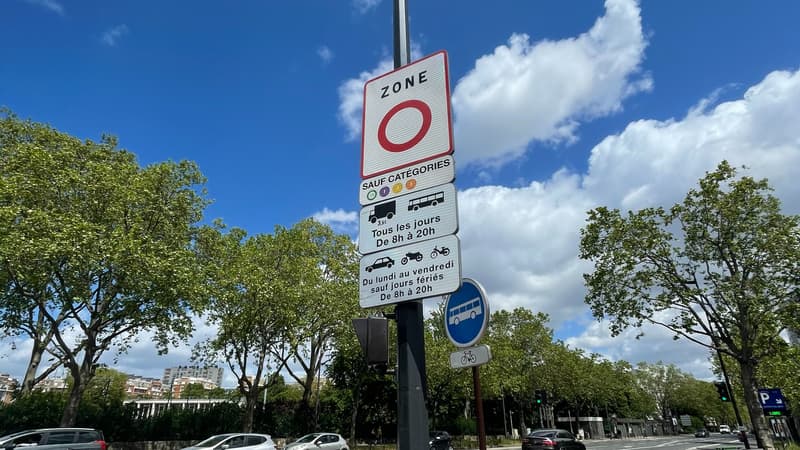Under a somewhat (less) nebulous acronym, the French discover a reality to which they struggle to adhere. At least for a good half of them. According to the latest Observatory on Low Emission Zones (ZFE) and electric vehicles* published on Thursday, 49% of those surveyed declared themselves against ZFE-m (Low Emission Mobility Zones).
A figure that rises six points compared to the previous survey published in May 2022. And this, while 43 agglomerations of more than 150,000 inhabitants must implement this system in 2025.
“The problem is adaptation”
Knowing them better, motorists are becoming more aware of the main consequence: the ban on using their vehicle to enter EPZs if it is too old. Negative opinions about ZFEs thus rise to 62% among owners of cars with Crit’Air 4, 5 or unclassified stickers (the vast majority of diesel vehicles over 18 years old and gasoline vehicles over 25 years old).
“Owners of affected vehicles are as sensitive to environmental issues as other French people. The problem is adaptation,” sums up Franck Cazenave, a mobility expert behind the study.
“More people are aware and understand that they are directly affected but do not have the means to adapt,” he continues.
According to the calculations of the authors of the study, close to 6 million vehicles will cease to be authorized to circulate on January 1, 2025 in a ZFE-m (4.1 million Crit’air 3 vehicles and almost 2 million Crit’ Air 4.5 and not classified). ). However, more than a third (36%) of the owners explain that on this date they will continue to use their vehicle, which is now prohibited, because they cannot afford to change it.
“With this study, we see that it is impossible to adapt to the ZFE for a large part of the owners of Crit’Air 4 and 5 vehicles. And this is also partly the case with Crit’Air 3, where it is even more massive because there are more vehicles, summarizes Franck Cazenave. We have a real problem ahead”.
More aid, postpone the entry into force
Crit’Air 3 vehicles include diesel models that are now 13 to 17 years old and gasoline models that are 18 to 25 years old. “If we do nothing, we will have an environmental problem to which we add a social problem. This risks increasing anger,” continues Franck Cazenave.
The authors of the study propose to postpone from 2025 to 2027 the ZFE-m entry ban for Crit’Air 3 plus substantial help to change vehicles – a bonus of 4000 euros subject to means.
A movement already taken by some cities. The Métropole du Grand Paris has for the first time postponed the ban on the Crit’Air 3 from July 1, 2022 to July 1, 2023, and could announce a further postponement next week, this time to 2024. Lyon has also offered a two-year suspension for Crit’Air 2 vehicles, banned on January 1, 2028 and not in 2026. In Toulouse, according to La Dépêche, new aid will be voted to help owners of Crit’Air 3 vehicles to change of vehicle.
*Observatory of Low Emission Zones and electric vehicles: Questionnaire administered online based on an average duration of 15 minutes in the CSA Link, Dynata and Pure Spectrum panels from 09/01/2023 to 01/02/2023 with a national representative sample of 10,022 French people aged 18 or over. (dues). Proposals have been made to holders of at least one Crit’Air 3, 4, 5 or Unclassified (NC) vehicle in certain homes or travel departments for work/studies, in order to have sufficiently solid bases. That’s a total of 10,370 respondents.
Source: BFM TV


